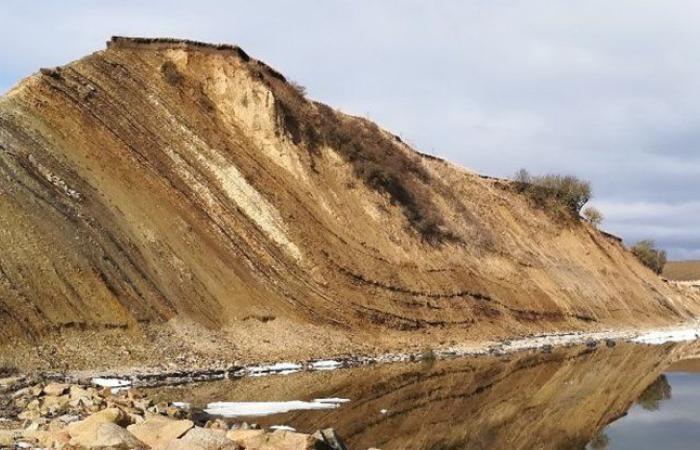These rare calcium carbonate crystals, whose formation requires temperatures below 4 degrees Celsius, consist of the mineral Ikaite and occur in the tens of millions on the Danish islands of Fur and Mors. They were dated 56-54 million years ago.
“Why we find Glendonite from a hot period with temperatures above 35 degrees has long been a mystery,” says geologist Nicolas Thibault from the University of Copenhagen in Denmark. “It shouldn’t be possible.”
After a detailed chemical analysis of glendonite samples by Thibault and an international team of researchers using a technique called Clumped Isotope Thermometry to trace temperatures over millions of years, we may have an answer: The Eocene may not have been as uniformly warm as previously thought.
The idea of colder Eocene spells has been put forward earlier, but the evidence so far has not been conclusive. The new chemical decomposition helps researchers make the case for cooler conditions. Models suggest that glendonites form in waters below 5 degrees Celsius at a depth of about 300 meters.
Sedimentary ash layers on Fur Island suggest the possibility that volcanic eruptions may have been responsible for these cooler episodes in the Eocene that are localized in specific regions, which would help explain the cooler waters and rock record.
“During this time there was likely a large number of volcanic eruptions in Greenland, Iceland and Ireland,” says Thibault.
“These release sulfuric acid droplets into the stratosphere that could have stayed there for years, shading the planet from the sun and reflecting away the sunlight.”
“This helps to explain how regionally cold areas were possible, which influenced the climate in early Eocene Denmark.”
The new study supports the hypothesis that colder Eocene periods are more likely than the alternative – meaning the science is wrong about the type of temperatures at which icaite-based rocks can form.
Next, the team would like to conduct similar research to determine how widespread the cooling discovered in the Danish basin actually was. Other geological records – including those from the Arctic – suggest that this drop in temperature did not occur worldwide throughout the Eocene.
As with any discovery of our climate past, the study will help scientists map our climate future.
We may not have volcanic ash obliterating the sky anytime soon, but a rapidly changing climate is something we go through – just like parts of the world more than 50 million years ago, long before humans came on stage.
“Our study helps solve a glendonite puzzle and show that cooler episodes are possible in otherwise warmer climates,” says Thibault.
“The same is true today as we are aware of the possibility of abrupt climate change.”
The research was published in Communication with nature.
These were the details of the news Huge “impossible” crystals in Denmark were eventually declared by scientists for this day. We hope that we have succeeded by giving you the full details and information. To follow all our news, you can subscribe to the alerts system or to one of our different systems to provide you with all that is new.
It is also worth noting that the original news has been published and is available at de24.news and the editorial team at AlKhaleej Today has confirmed it and it has been modified, and it may have been completely transferred or quoted from it and you can read and follow this news from its main source.

